Edward the Confessor coin brooch found in field
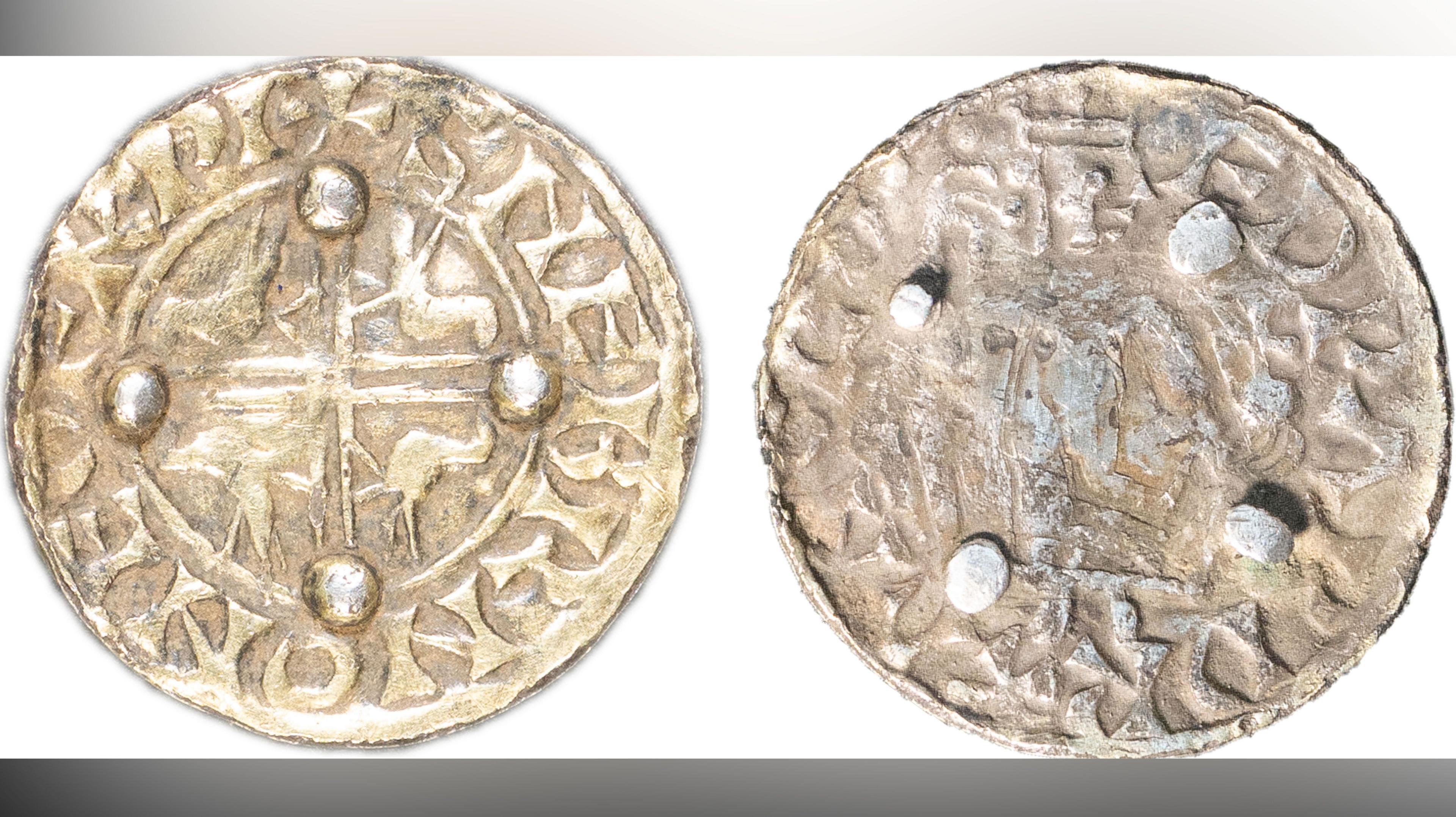
Modifying coins into jewellery happened across the Anglo-Saxon and Norman periods, but in the second half of the 11th Century it was particularly fashionable to mount silver pennies
- Published
A gilded silver coin brooch that was the height of fashion during the reign of Edward the Confessor (1042-1066) has been found by a metal detectorist.
The discovery was made in August 2020 near Sheering, Essex, and the coin was struck at a mint in York between 1056 to 1059.
County finds liaison officer Lori Rogerson said these coin brooches or badges were the "most popular pieces of jewellery" during the Anglo-Saxon king's reign and, with its cross design, it was probably worn as "an act of Christian devotion".
The modified silver penny is to be the subject of a treasure inquest and Epping Forest Museum hopes to acquire it.
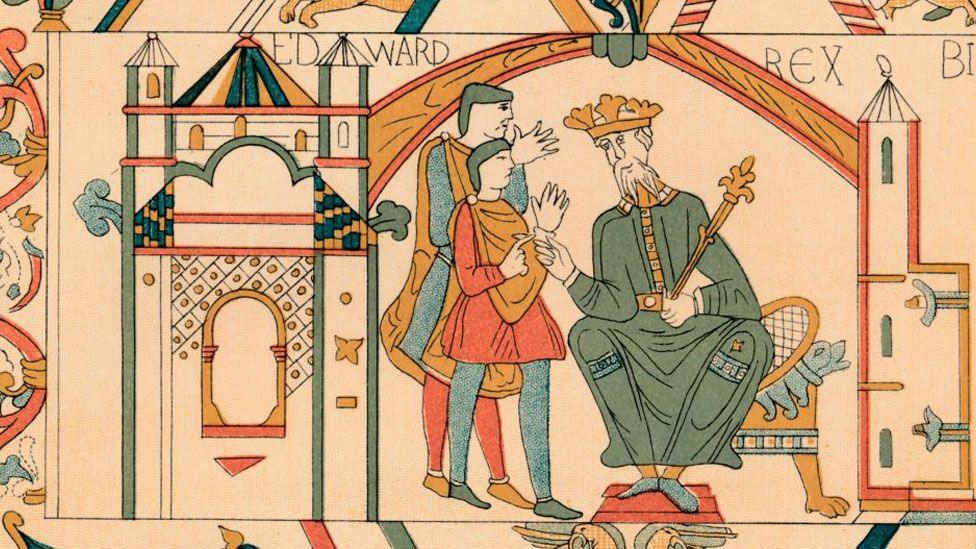
Edward the Confessor's death in 1066 precipitated the invasion and conquest of England by William of Normandy, who claimed the throne had been left to him
When Edward died without children, the throne was contested and ultimately claimed by William the Conqueror after his invasion.
"It is interesting that coins converted in such a specific way date to the reigns of Edward the Confessor and William the Conqueror, with a concentration in a period of 10 years," said Ms Rogerson.
She said experts described it as a coin badge rather than brooch because the 18mm (0.7in)-round piece was not for fastening clothes but was designed to be purely decorative - as well as devotional.
"They all have the cross design on the reverse but all the examples we know of have the reverse showing, so it was definitely worn an act of Christian devotion," she said.
It has EDPARD RX ANGL struck on one side and the other said it was minted in York by a man called Snebern.
With the fashion for coin badges at its height during Edward's reign, she believed it might well have been turned into a brooch at the mint, rather than taken to a silversmith for adaption.
She added brooches made from Edward's coins minted in York were more unusual finds than those minted elsewhere.
"These badges might have been more easy or affordable to obtain than a piece of jewellery - or may just have been a trend of the time that people saw and wanted to be a part of," said Ms Rogerson.
Get in touch
Do you have a story suggestion for Essex?
Follow Essex news on BBC Sounds, Facebook, external, Instagram, external and X, external.
Related topics
- Published18 February 2024
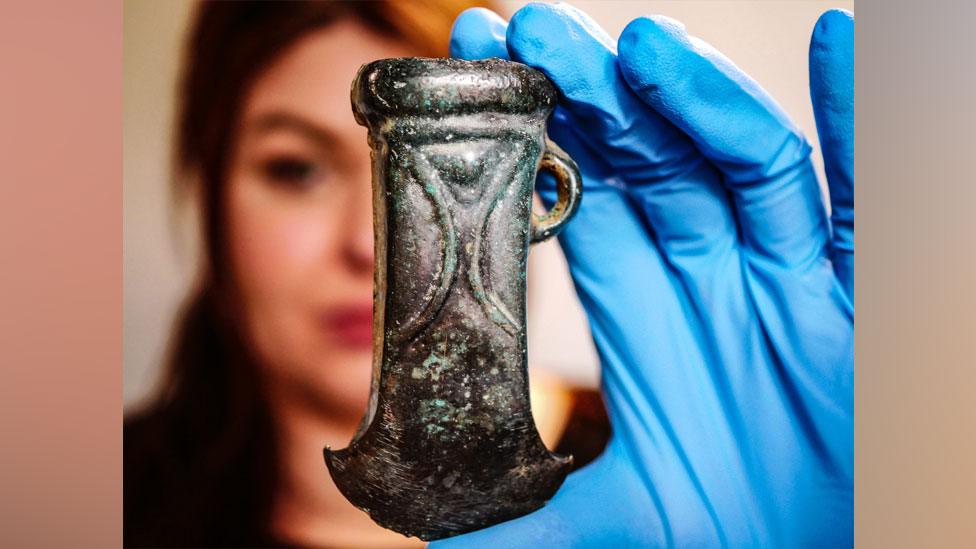
- Published22 February 2024
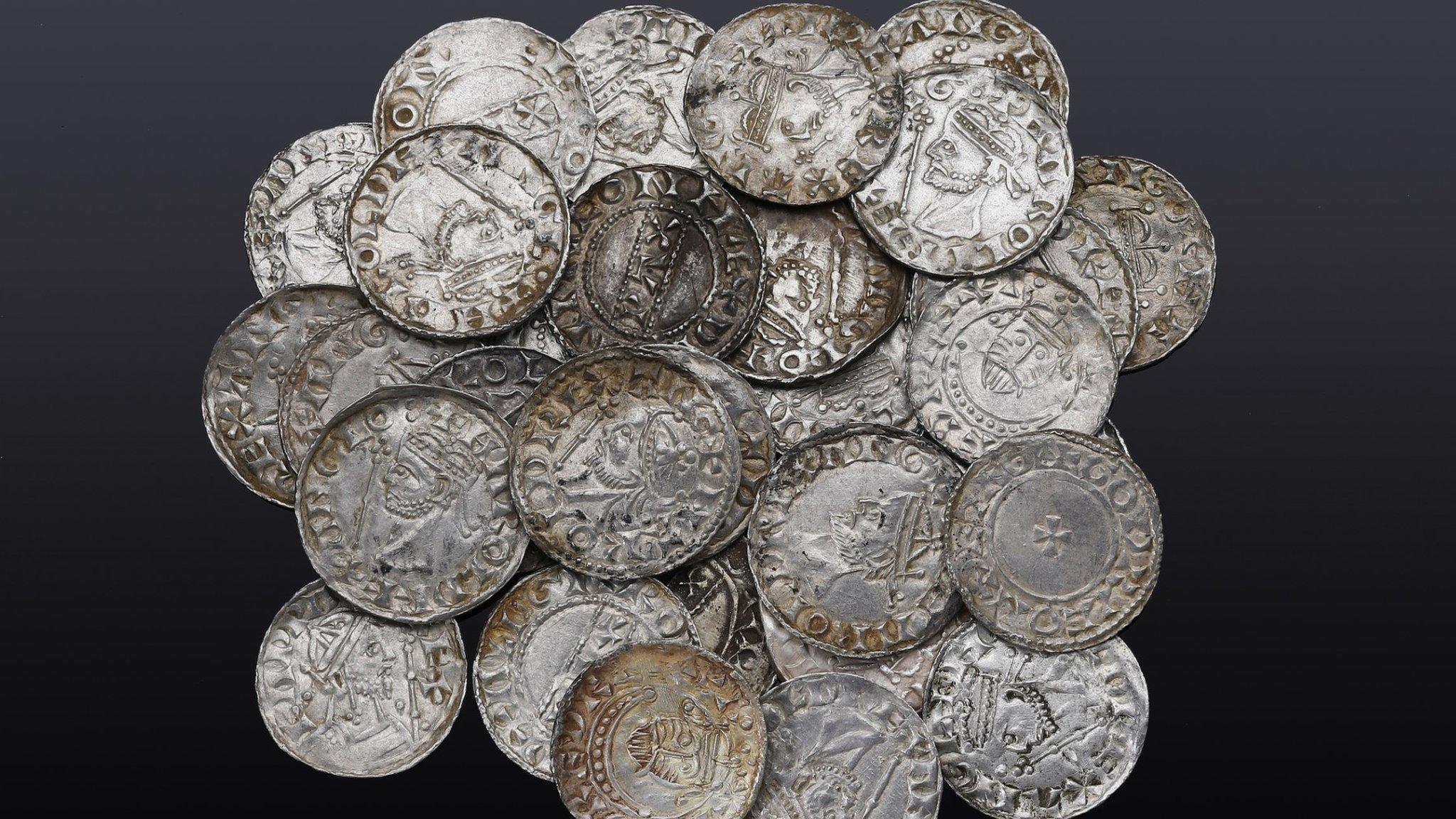
- Published15 July 2023
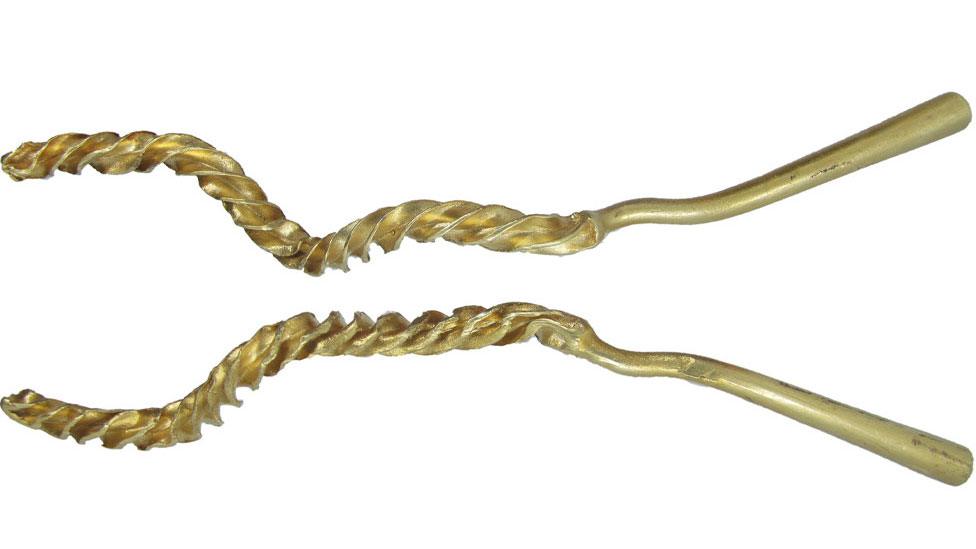
- Published8 November 2017
